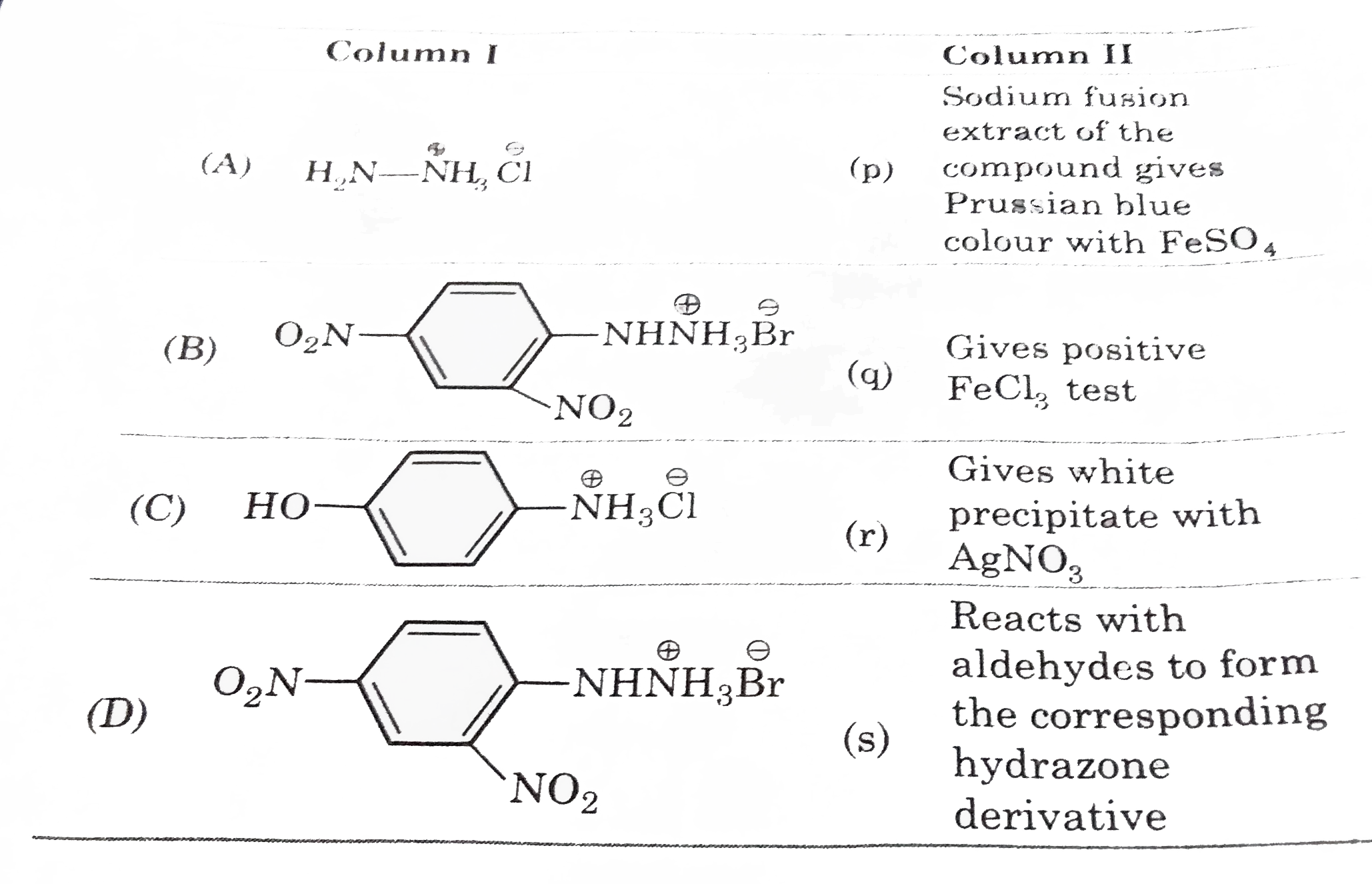Match the conversions in Column I with the type(s) of reaction(s) given in Column II.
Column IColumnIIA.PbS→PbOp.RoastingB.CaCo3→CaOq.CalcinationC.ZnS→Znr.Carbon reductionD.Cu2S→Cus.Self-reduction
a-q: b-r : c-p,r :d-p,s
a-p:b-q:c-p,r: d-p,s
a-p,s: b-q : c-p : d-s
a-p, s: b-p,q : c-p: d-s
The correct Answer is:B
Step by step video, text & image solution for Match the conversions in Column I with the type(s) of reaction(s) given in Column II. {:("Column I","ColumnII"),(A. "PbS"rarr"PbO",p. "Roasting"),(B. "CaCo"_(3)rarr"CaO",q. "Calcination"),(C. "ZnS"rarr"Zn",r. "Carbon reduction"),(D. "Cu"_(2)"S"rarr"Cu",s. "Self-reduction"):} by Chemistry experts to help you in doubts & scoring excellent marks in Class 12 exams.
Updated on:21/07/2023Topper's Solved these Questions
- METTALURGYBOOK - NARAYNACHAPTER - METTALURGYEXERCISE - MULTIPLE ANSWER QUESTOINS
66 Videos
- METTALURGYBOOK - NARAYNACHAPTER - METTALURGYEXERCISE - Assertion and Reasoning Questions
2 Videos
- METTALURGYBOOK - NARAYNACHAPTER - METTALURGYEXERCISE - Concentration
6 Videos
- METALLURGYBOOK - NARAYNACHAPTER - METALLURGYEXERCISE - STATEMENT TYPE QUESTOINS
20 Videos
- NUCLEAR CHEMISTRYBOOK - NARAYNACHAPTER - NUCLEAR CHEMISTRYEXERCISE - INTEGER
28 Videos
Similar Questions
Match the conversions in Column I with the type(s) of reaction(s) given in Column II.
Column IColumnIIA.PbS→PbOp.RoastingB.CaCo3→CaOq.CalcinationC.ZnS→Znr.Carbon reductionD.Cu2S→Cus.Self-reduction
View SolutionMatch the compounds in Column I with their characteristic test (s) reaction (0s) given in Column II.

View Solution
Knowledge Check
Match the column - I with column - II
List - IList - II(P)PbS→PbO(1)roasting(Q)CaCO3→CaO(2)calcination(R)ZnS→Zn(3)Carbon reduction(S)Cu2S→Cu(4)self reductionAPQRS121,31,4BPQRS2314CPQRS2341DPQRS3421
match each of the compounds in column I with its characteristic reaction(S) in columnII.

View SolutionMatch the following metals listed in Column I with extraction processes listed in Column II.
Column IColumn IIA.Silverp.Fused salt electrolysisB.Calciumq.Carbon reductionC.Zincr.Carbon monoxide reductionD.Irons.AmalgamationE.Coppert.Self-reduction
View SolutionMatch the anionic species given in Column I that are present in the ore (s) given in Column II.
Column IColumn IIA.Carbonatep.SideriteB.Sulphideq.MalachiteC.Hydroxider.BauxiteD.Oxides.Calaminet.Argentite
View SolutionMatch each of the reaction given in Column I with the corresponding product(s) given in Column II.
Column IColumn IIA.Cu+dil. HNO3p.NOB.Cu+cons. HNO3q.NO2C.Zn+dil.HNO3r.N2OD.Zn+cons HNO3s.Cu(NO3)2t.Zn(NO3)2
View SolutionMatch the following choosing one item from Column X the appropriate item from Column Y.
Column XColumn Ya.Alp.CalamineB.Cuq.CryoliteC.Mgr.MalachiteD.Zns.Carnalite
View SolutionMatch the extraction processes listed in Column I with metals listed in Column II.
Column IColumn IIA.Self reductionp.LeadB.Carbon reductionq.SilverC.Complex formation and displacement by metal r.CopperD. Decomposition of iodides.Boron
View SolutionMatch the anionic species given in Column I that are present in the ore (s) given in Column II.
Column IColumn IIA.Carbonatep.SideriteB.Sulphideq.MalachiteC.Hydroxider.BauxiteD.Oxides.Calaminet.Argentite
View Solution